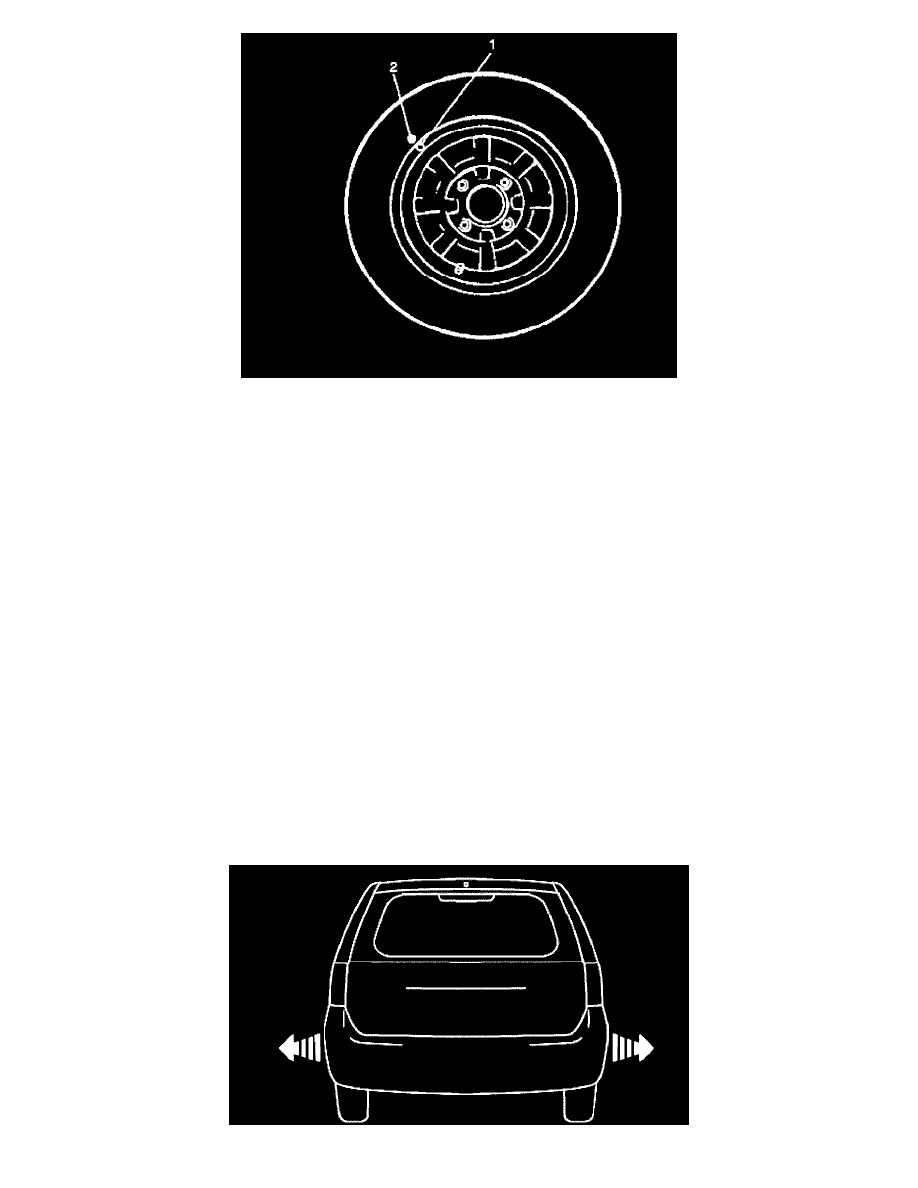Grand Vitara 2WD V6-2.7L (2006)

Radial Tire Lead / Pull Description
Radial Tire Lead / Pull Description
Lead / Pull is the deviation of the vehicle from a straight path on a level road even with no pressure on the steering wheel.
Lead is usually caused by the following conditions.
^
Improper tire and wheel alignment.
^
Uneven brake assemblies.
^
Tire construction.
The way in which a tire is built can produce lead in a vehicle. An example of this is placement of the belt. Off center belts on radial tires can cause the
tire to develop a side force while rolling straight down the road. If one side of the tire has a little larger diameter than the other, the tire will tend to roll
to one side. This will develop a side force which can produce vehicle lead.
The procedure in the figure (Lead Diagnosis) should be used to make sure that wheel alignment is not mistaken for tire lead.
^
Part of the lead diagnosis procedure is different from the proper tire rotation pattern currently in the owner and service manuals. If a medium to
high mileage tire is moved to the other side of the vehicle, be sure to check that ride roughness has not developed
^
Rear tires will not cause lead.
Radial Tire Waddle Description
Radial Tire Waddle Description
Waddle is side to side movement at the front and/or rear of the vehicle. It is caused by the steel belt not being straight within the tire. It is most
noticeable at a low speed, 8 to 48 kph (5 to 30 mph).
It is possible to locate the faulty tire by road testing the vehicle. If it is on the rear, the rear end of the vehicle shakes from side to side or waddles. To
the driver in the seat, it feels as though someone is pushing on the side of vehicle.
If the faulty tire is on the front, waddling is more visual. The front sheet metal appears to be moving back and forth and the driver feels as though he is
at the pivot point in vehicle.
Waddle can be quickly diagnosed by using Tire Problem Detector (TPD) and following the equipment manufacture's recommendations.
If TPD is not available, an alternative method of substituting known-good tire / wheel assemblies can be used as follows, although it takes a longer
time.
